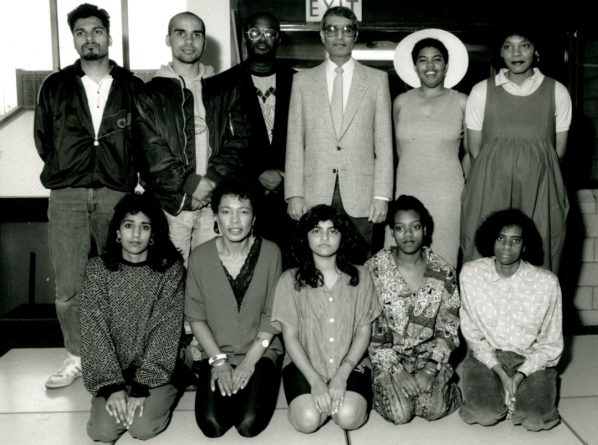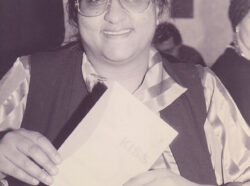Black writers were part of Manchester’s writing scene since the beginning of Commonword. Early issues of Write On and Voices published writers such as Linford Sweeney, Keith Stephens, Kevin Otoo and Elaine Okoro, but some black and Asian people in the city recognised that more could and should be done. After taking up a marketing and distribution role at Commonword in around 1984, Mike Narayansingh, enthused by the ethos of Commonword, started the Moss Side People’s Writing Group to encourage more black writers. It took place at what is now the Greenheys Adult Learning Centre on Upper Lloyd Street, Manchester.¬†Writers like Tina Tamsho-Thomas applied pressure on Commonword to carry on moving things forward, leading to the creation of a development worker role for black and Asian writers in 1986. This post was first held by Lemn Sissay followed by SuAndi (focusing on black women writers) and later on Peter Kalu.
Sissay set up Cultureword, Commonword’s development programme for black and Asian writers, making it impossible to ignore their presence. Building on the work of the Moss Side People’s Writing Group, Sissay set up Identity, a weekly workshop, which unlike its predecessor was for black and Asian people only. Cultureword’s first anthology Black and Priceless was published in 1988 followed by Talkers Through Dream Doors a collection by women and Flame featuring British Asian writers coming in 1991. Georgina Blake was the first black writer to have her debut poetry collection published by Commonword soon after. All four of these books were published by Crocus, enabling national distribution. As well as publishing work in books, Cultureword contributed energy and spark to Manchester’s writing scene, publishing magazines and running poetry competitions.
Cultureword was just one part of Manchester’s black creative ecosystem. Around the same time, performance groups such as Blackscribe, Nailah and the Asian Women’s Writing Group were set up. Black cultural institution and performance venue The Nia Centre opened. Together these groups fostered an environment where black and Asian artists could really flourish.
Commonword published hundreds of black and Asian writers, but it was the writers who regularly attended Identity that supported each other to realise their writing achievements. You can read more about the group here.




